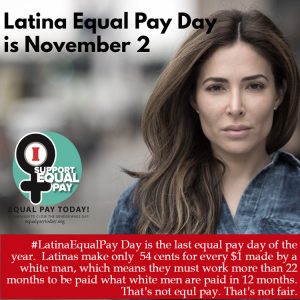LatinaLista — Latinas comprise 48% of the Hispanic adult population in the United States. While Latinas are unique, as a collective whole, we share similarities with other women but also do retain certain distinctions, for good or bad.

Between 1980 and 2000, the Hispanic share of meat-processing workers increased from under 10 percent to almost 30 percent.
The Pew Hispanic Center recently released a very in-depth report on Latinas. From education to labor force participation, this report tallies the progress, or more like the lack of it, Latinas are making.
While most of the findings are discouraging, they do serve as a starting point to address issues that need to change to ensure the health and future prosperity of the greater Latino community.
Some of the “highlights” of the report:
The majority (55%) of all Hispanic women report that they speak only English in
their home or that they speak English very well.
The labor force participation rate of Hispanic women (59%) is similar to the
participation rate for non-Hispanic women (61%). Native-born Hispanic women
(64%) have a higher participation rate.
Hispanic women are less educated than non-Hispanic women.
The marital status of Hispanic women is similar to that of non- Hispanic women. Equal shares of Hispanic and non-Hispanic women are married (54%).
Native-born Hispanic women who gave birth were more likely than immigrant Hispanic women to be unmarried. Half (50%) of all births to native-born Hispanic women in the previous year were to single mothers compared with 35% of immigrant Hispanic women.
Hispanic women are nearly three times as likely as non- Hispanic women to be uninsured, 36% versus 13%.
Median weekly earnings for Hispanic women who are employed full-time are $460 per week. The median weekly earnings of non-Hispanic women, $615, are 34% higher.
Hispanic women are much more likely than non- Hispanic women to live in a lower-income household
53% compared with 34%.
Hispanic women account for 12% of the employed female population in the United States. However, they account for 42% of women employed in farming, fishing and forestry occupations, 37% of women in building and grounds cleaning and maintenance occupations; and 23% of women in production occupations.
Hispanic women are more likely than non-Hispanic women to work in the following industries: eating, drinking and lodging services (11% versus 6%); personal and laundry services/private household services (6% versus 3%); and nondurable goods manufacturing (5% versus 3%).
More Hispanic women work in the wholesale/retail trade industry than any other industry. One-in-seven (15%) Hispanic women work in the wholesale/retail trade industry, a similar share as for non-Hispanic women (14%).




